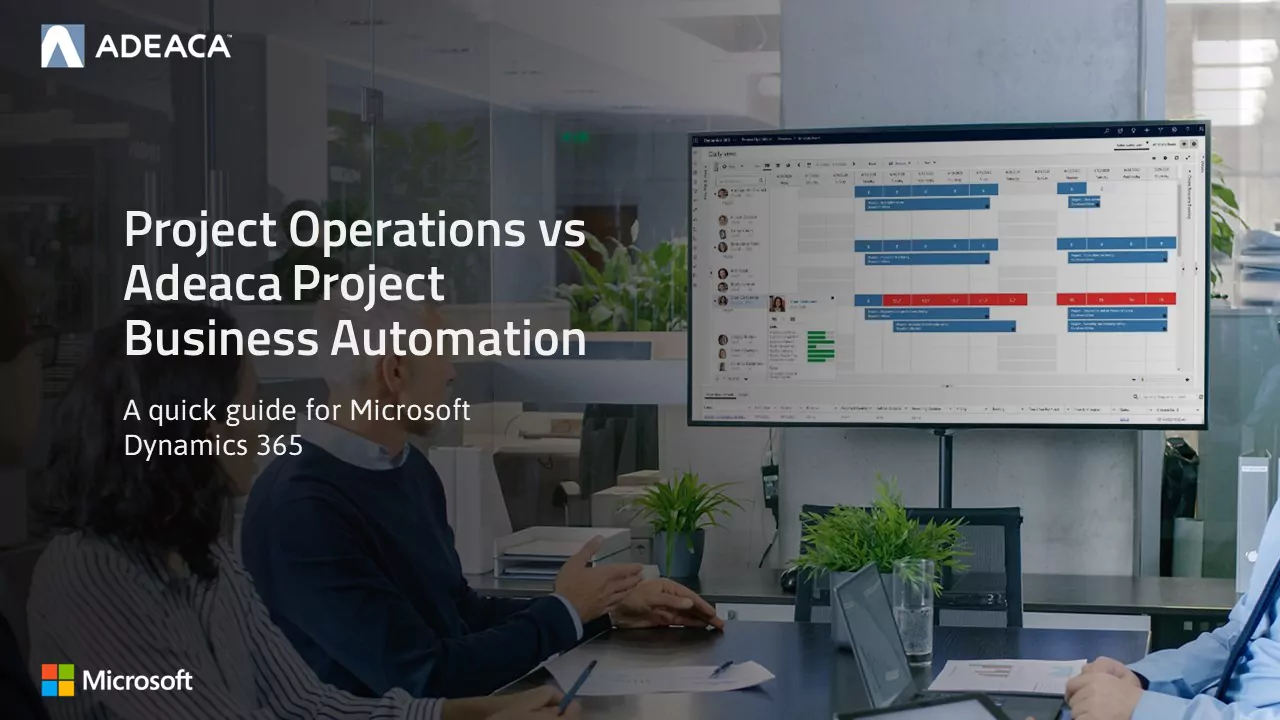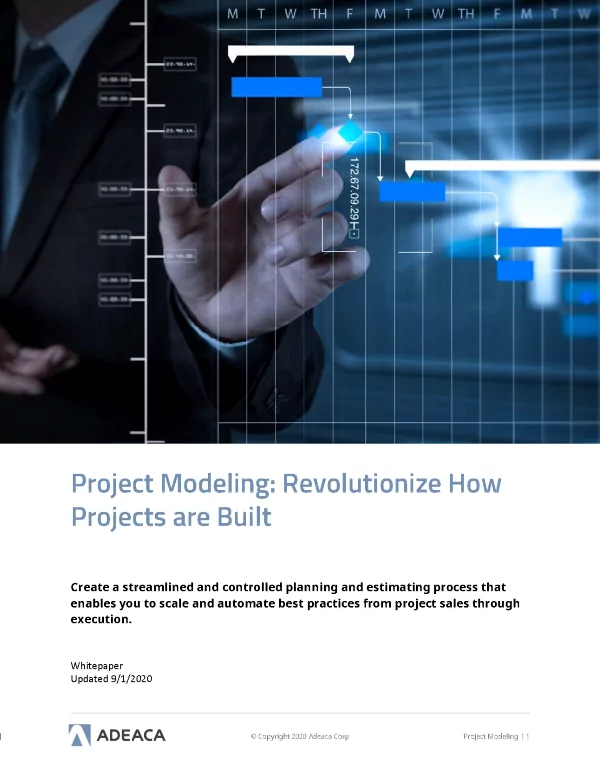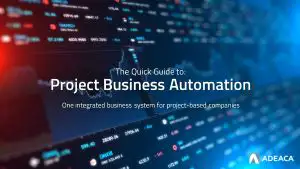Although projects have been built the same way for decades, project-based companies are starting to recognize the need to demand more from their business systems. PBA is an integrated project business system that supports all project business processes and connects them seamlessly in real time.
While project-based companies seeking new solutions may consider Dynamics 365 Project Operations (D365PO) as part of their solution evaluation process, it’s important to understand its functionalities and capabilities before making any big decisions.
[This is the second blog in a series that provides a comprehensive high-level overview of the project business functionality found in D365PO and Adeaca PBA. See the first article here. This blog compares the Project Modeling functionality between the two solutions.]
Project Modeling
Project Modeling or anything remotely similar has never been done before Adeaca Project Modeling. Therefore, you will not find Project Modeling in D365PO. However, Adeaca offers the very first Project Modeler as part of its Project Business Automation platform for Dynamics 365.
Download this Quick Guide: Microsoft Dynamics 365 Project Operations vs Adeaca Project Business Automation to gain a detailed understanding of the capabilities of both systems.
An entirely new approach to the sales and initiation phase of a project, Project Modeling allows you to develop more accurate project plans in less time, accelerate the sales process, and ultimately, drive better outcomes for your customers.
It’s similar to a product configurator in the sense that it builds the components (i.e. the tasks and costs) of a project from a predefined set of models. Project Modeling creates a streamlined planning and estimating process that enables project-based companies to scale and automate best practices from project sales through execution.
Any Type of Project can be Modeled
If you’re a project business, chances are you’re already using project templates to manage your projects. And while templates can provide an overall structure to your plan, it still requires significant manipulation to shape the template to the specifications of the new project. This means spending extra time and resources manually adding, removing, or editing every task and changing the duration, materials, resource pools, etc.
Oftentimes, most planning tools that provide project templates do not include estimating cost and materials. As a result, project businesses have to build the cost breakdown structure in a spreadsheet or purchase another application. This manual process produces more errors for most companies.
Project Modeling makes the project template dynamic. This means that specific quantities, types and other specifications of a project template become variable inputs that a user can change and update before the model is inserted into the project. This reduces the number of changes required after the model generates the new project.
Benefits of Project Modeling
Project Modeling essentially revolutionizes how projects are built and sold. There are three main advantages of using project modeling versus the traditional approach of building a project step by step, or by copying and pasting a past project.
- Speed and Accuracy: As many project managers know, depending on the complexity of a project, that traditional route often takes hours sometimes days to construct, edit each task, gather information from various key stakeholders, etc. However, with Project Modeler, a user can build an entire project and deliver cost estimates in just minutes through predefined components and rules. Cost and price estimates, schedules, and Gantt charts are created instantly after configuring and inserting a model into a project.
- Project Business Governance: Project governance is the framework for how you execute projects and oversee their success. Project success or failure is often determined by the procedures and controls in place to manage the project process. Project models adhere to best practices across the company and from the beginning of the sales cycle. They also reduce human error. Salespeople utilizing the Project Modeler to build quotes and proposals are guaranteed to create the optimal plan.
- Improved Collaboration: When the plans presented in the sales proposals are based on accurate models that represent best processes, transitioning from sales to execution becomes flawless. This makes all stakeholders and departments involved aligned from the beginning, reducing rework and ensuring the best possible plan is proposed and executed against.
Project Modeling functionality works like this:
- Create library of approved task and cost models that represent the vast majority of your projects.
- Planners and Estimators create plans and budgets by inserting various models into a project.
- Formulas with configurable variables are used to ensure a fast and accurate fit for each unique project while maintaining governance.
Download the Project Modeling Whitepaper to learn how to create a streamlined and controlled planning and estimating process for your company.












